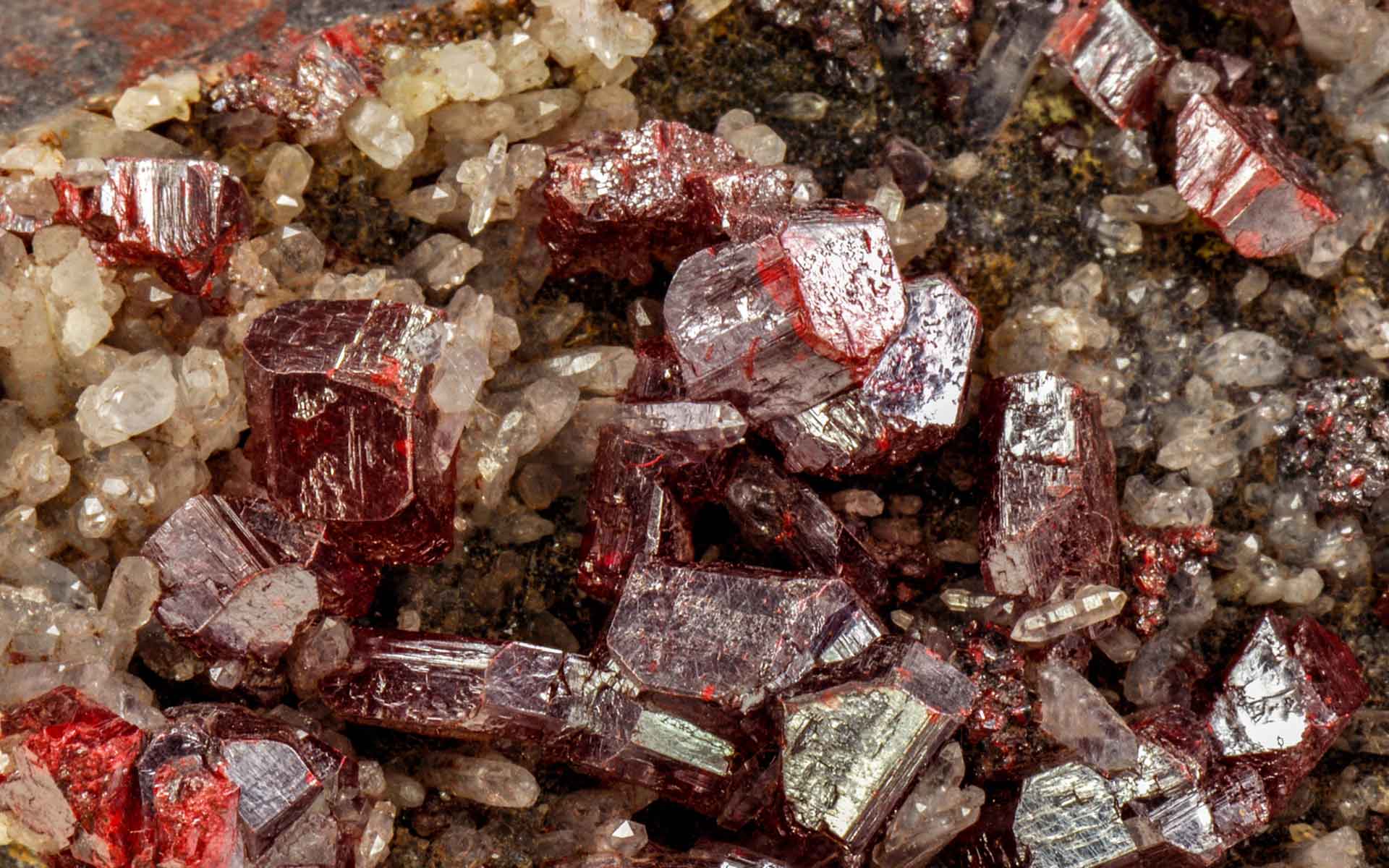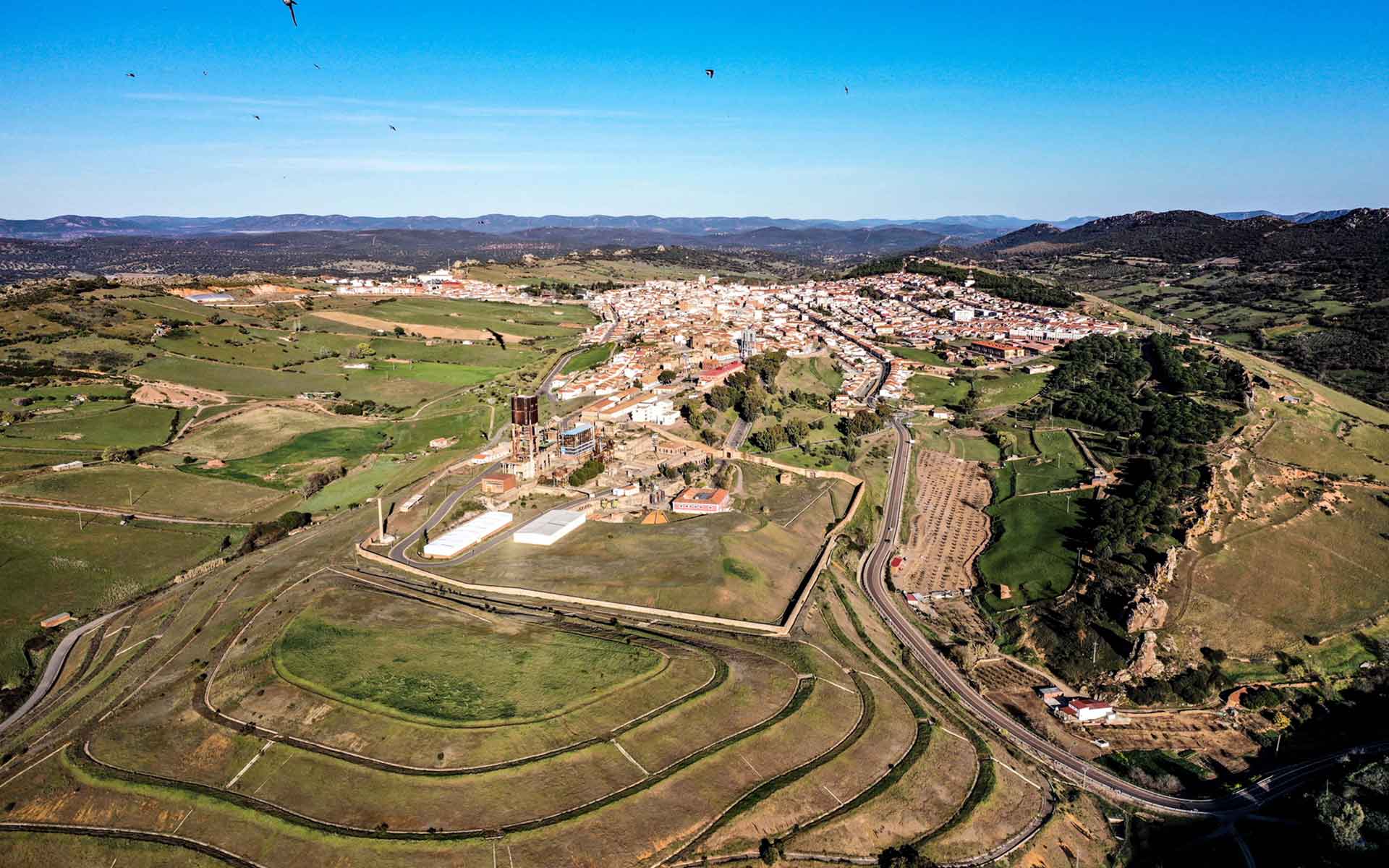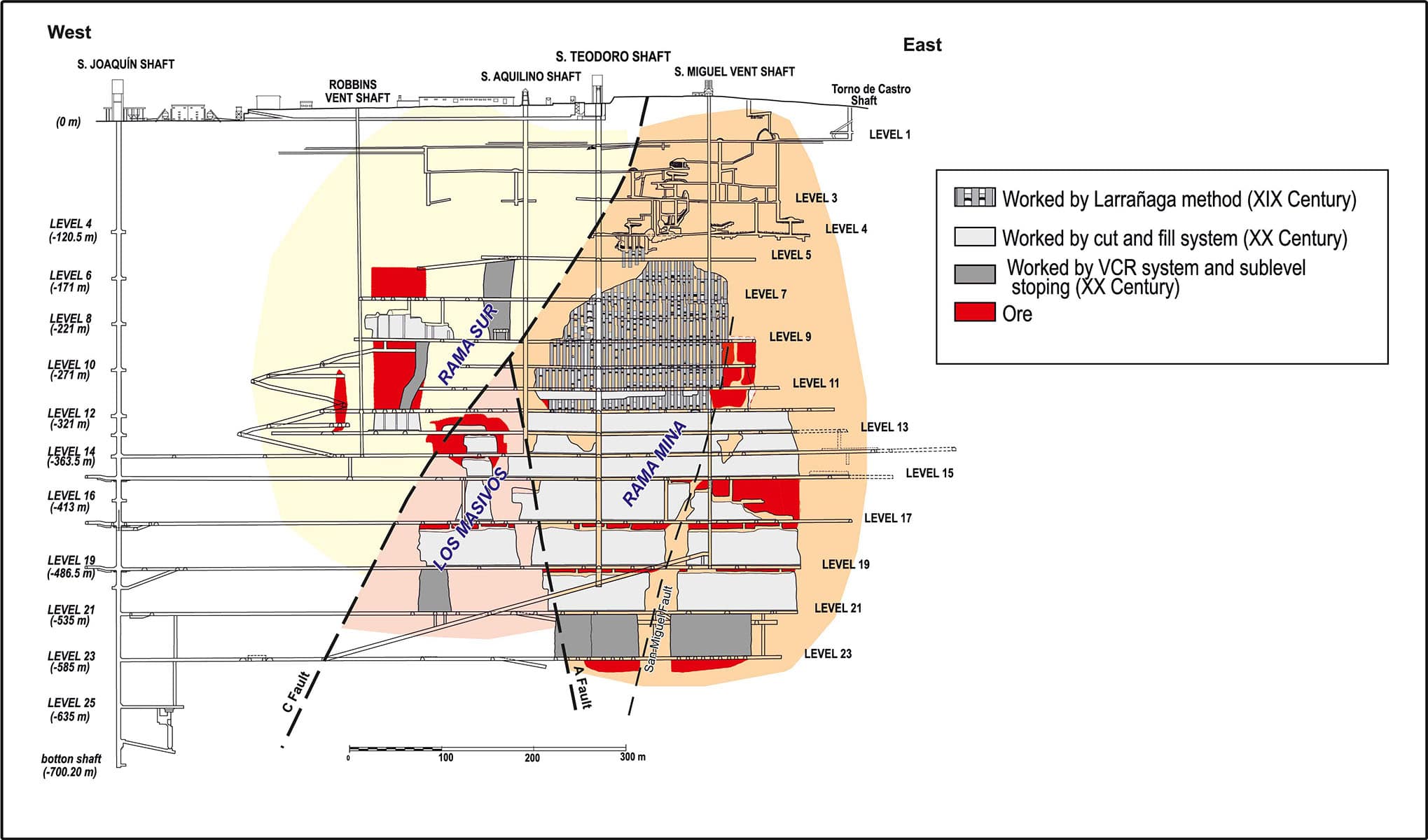
Cinnabar crystals on quartz from Almadén. (Photo: Luis Carcavilla Urquí).
Geological Period
Upper Ordovician – Lower Silurian
Main geological interest
Mineralogy
History of geosciences
Location
Castilla-La Mancha, Spain.
38°46’30.0″N, 4°50’30.0″W
Cinnabar crystals on quartz from Almadén. (Photo: Luis Carcavilla Urquí).
The largest known mercury deposit in the Earth and with a longest productive history dating back to the 3rd century BCE.
The exceptionality of this ore deposit lies in the unique geological characteristics that led to the high concentrations and large accumulations of mercury, which constitutes its own metallogenetic model (Saupé, 1990; Ortega Gironés and Hernández Sobrino, 1992; Palero-Fernández et al., 2015). The mining and metallurgical complex, together with part of the rest of the museum facilities, currently constitute the Almaden Mining Park, which is open to the public since 2008. The park includes a Visitor Center, the Mining Interpretation Center, and the Mercury Museum. It offers tours in real tunnels in the 16th-century inner mine. Almadén is included into the World Heritage List.
- Geological description
The giant Almadén mercury deposit is hosted in the Lower Silurian Criadero Quartzite; in turn this ore-bearing rock unit is cross-cut by the so-called Frailesca unit, a diatreme body of basaltic composition. The Almadén district is the largest mercury geochemical cluster on Earth, having produced one third of the total world mercury. It is a stratabound mineral deposit and is composed of three mineralized levels in the “Cuarcita del Criadero”. Formation that correlates with the Upper Ordovician to lower Silurian. The Silurian intraplate alkaline volcanism developed in submarine conditions, which triggered widespread hydrothermal activity resulting in Hg ore formation and pervasive alteration to carbonates. The deposit consists of impregnated and infilled joints with cinnabar in siliceous sandstone beds. It appears to be linked to the presence of explosive volcanic tuffs (Roca Frailesca). It is located on the southern limb of the Almadén syncline where it appears in a vertical position and with an E-W strike. In addition, the good outcrops of the mine tunnels allow excellent observations of the sedimentology, volcanic petrology, and Variscan tectonic structures, and are classic sites for fossil occurrences, particularly Silurian graptolites. The Almaden deposit has mined out about 7,000,000 flasks (= 241.500 Tm) with an average grade of 3.5% Hg. This is about a third part of all the mercury consumed by humanity.
- Scientific research and tradition
There are many studies of the Almadén ore deposit dating back in time. The mining history began some 2000 years ago when Romans use cinnabar as a vermilion red pigment (Hernández et al., 1999). When the arabs invaded, they gave this locality its name of Almaden. However, the ‘modern’ history of Almadén and mercury begins in 1555 when Bartolomé de Medina discovered the use of mercury in silver processing (Higueras et al., 2013).
- Reference
Hernández, A. et al. (1999) ‘The Almadén mercury mining district, Spain’, Mineralium Deposita, 34(5), pp. 539–548. Available at: https://doi.org/10.1007/s001260050219.
Higueras, P. et al. (2013) ‘Intraplate mafic magmatism, degasification, and deposition of mercury: The giant Almadén mercury deposit (Spain) revisited’, Ore Geology Reviews, 51, pp. 93–102. Available at: https://doi.org/10.1016/j.oregeorev.2012.12.004.
Ortega Gironés, E. and Hernandez Sobrino, A. (1992) ‘The mercury deposits of the Almaden syncline, Spain.’, Chronique de la Recherche Miniere, 60(506), pp. 3–24.
Palero-Fernández, F.J. et al. (2015) ‘Geological context and plumbotectonic evolution of the giant Almadén Mercury Deposit’, Ore Geology Reviews, 64, pp. 71–88. Available at: https://doi.org/10.1016/j.oregeorev.2014.06.013.
Saupé, F. (1990) ‘Geology of the Almaden mercury deposit, Province of Ciudad Real, Spain’, Economic Geology, 85(3), pp. 482–510. Available at: https://doi.org/10.2113/gsecongeo.85.3.482.
UNESCO World Heritage Documents (2012) Heritage of Mercury. Almadén and Idrija, UNESCO World Heritage Centre. Available at: https://whc.unesco.org/en/list/1313/
- Author(s)
Fernando José Palero Fernández
Previously was a geologist at Minas de Almadén and Arrayanes. Current position as a Consulting Geologist (Spain)
Saturnino Lorenzo Álvarez
Previously a geologist at Minas de Almadén and Arrayanes. Current Professor at the University of Castilla-La Mancha (Spain)
José Luis Gallardo Millán
Professor at the University of Castilla-La Mancha (Spain)


